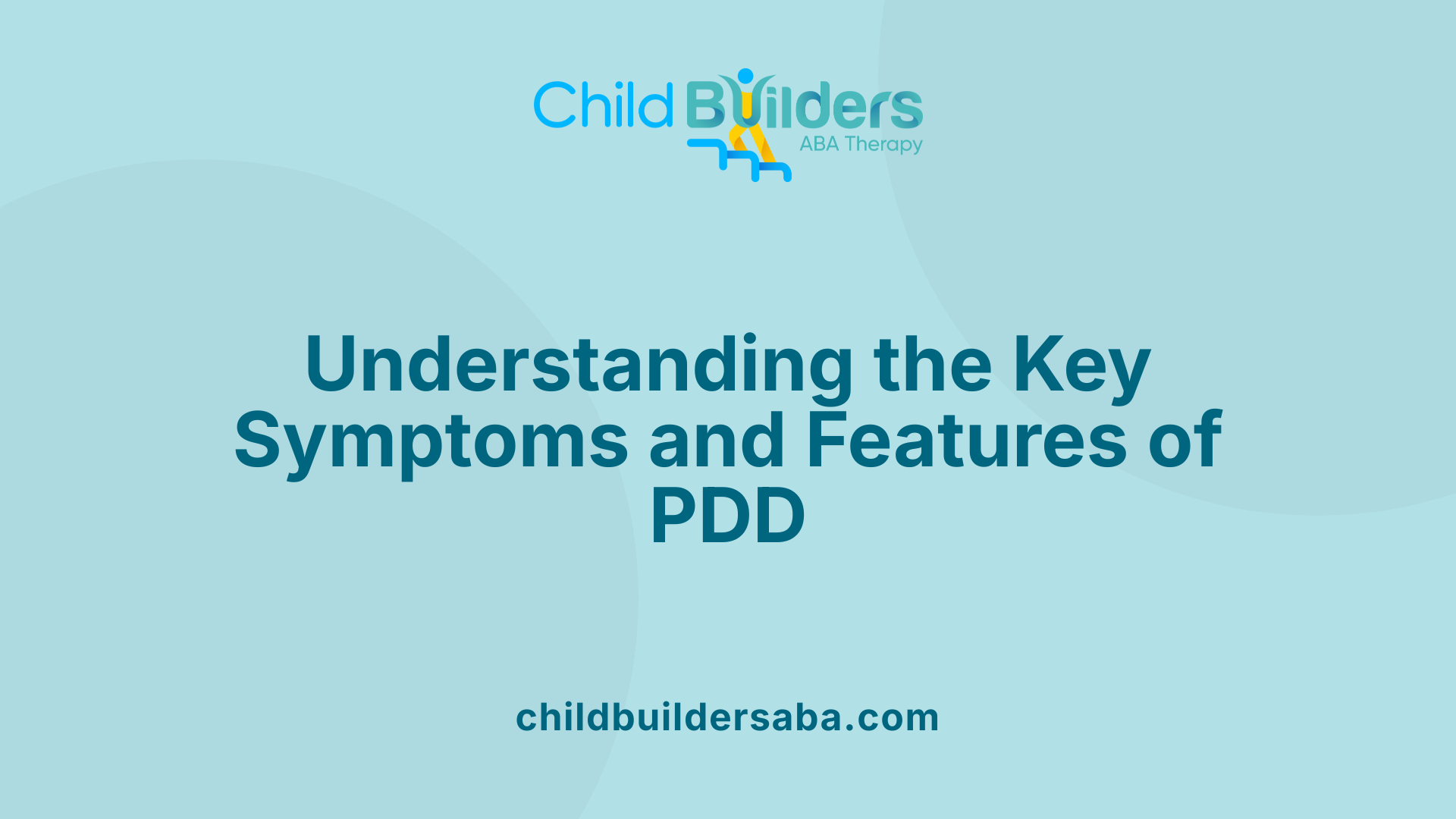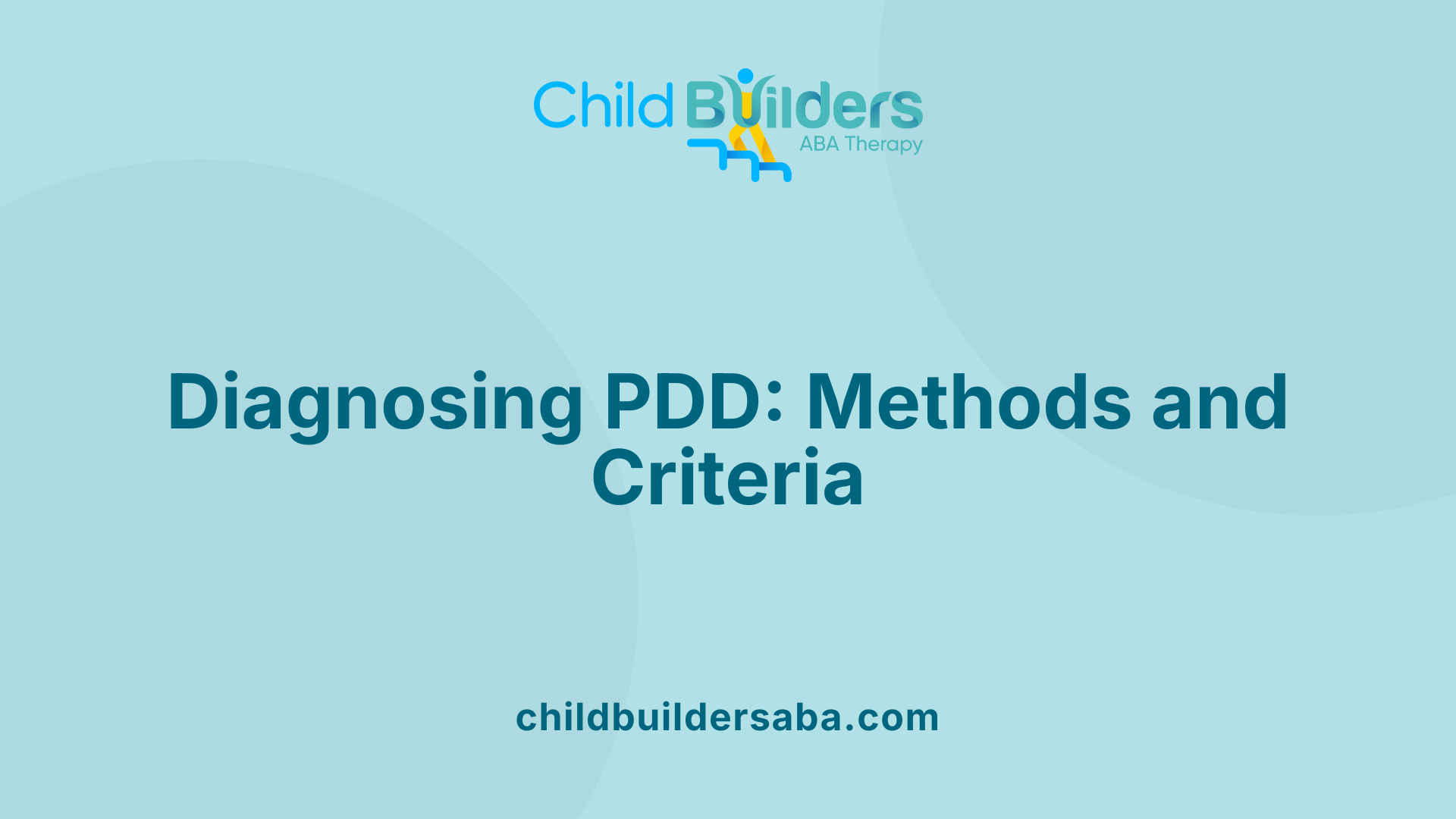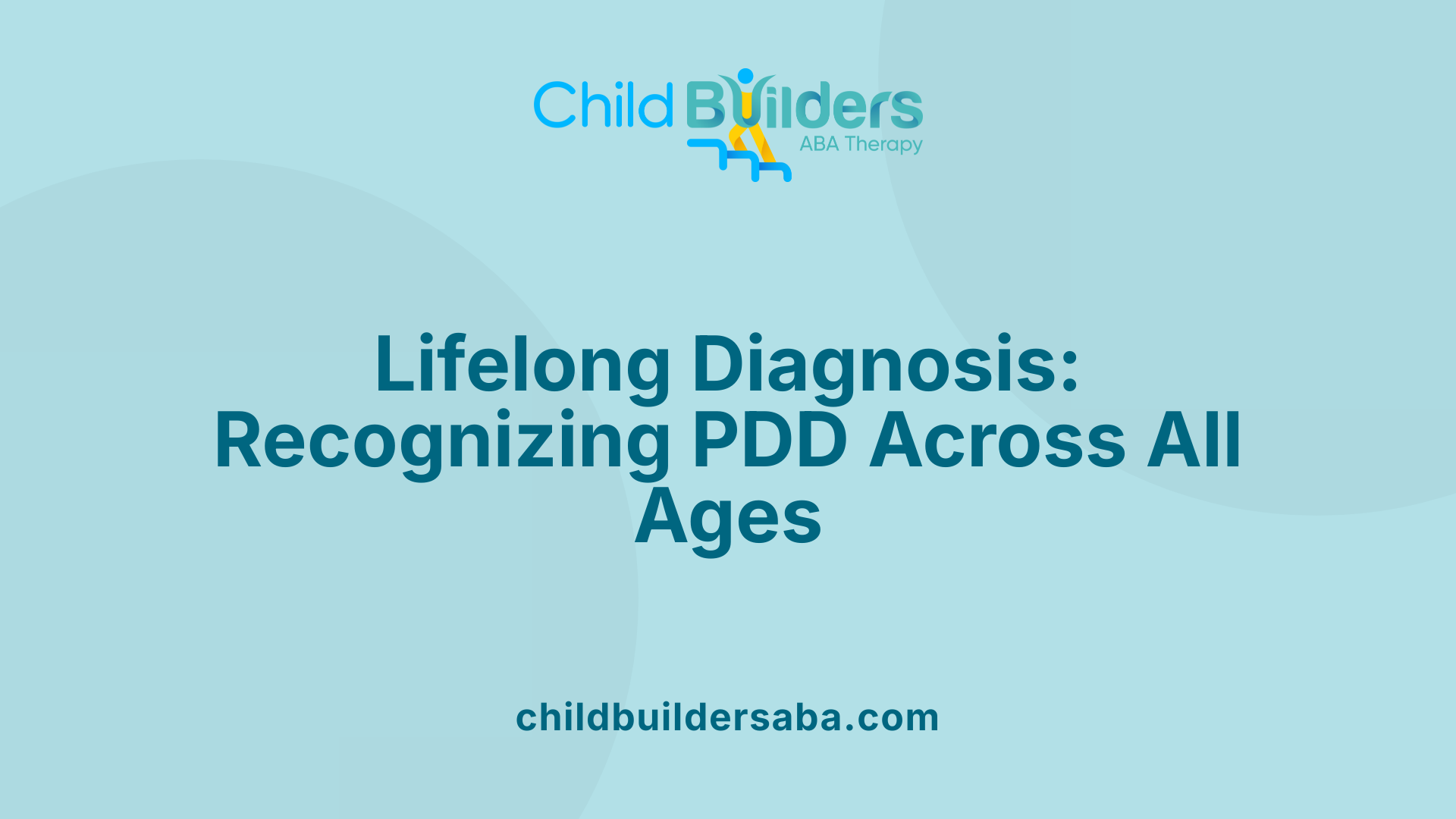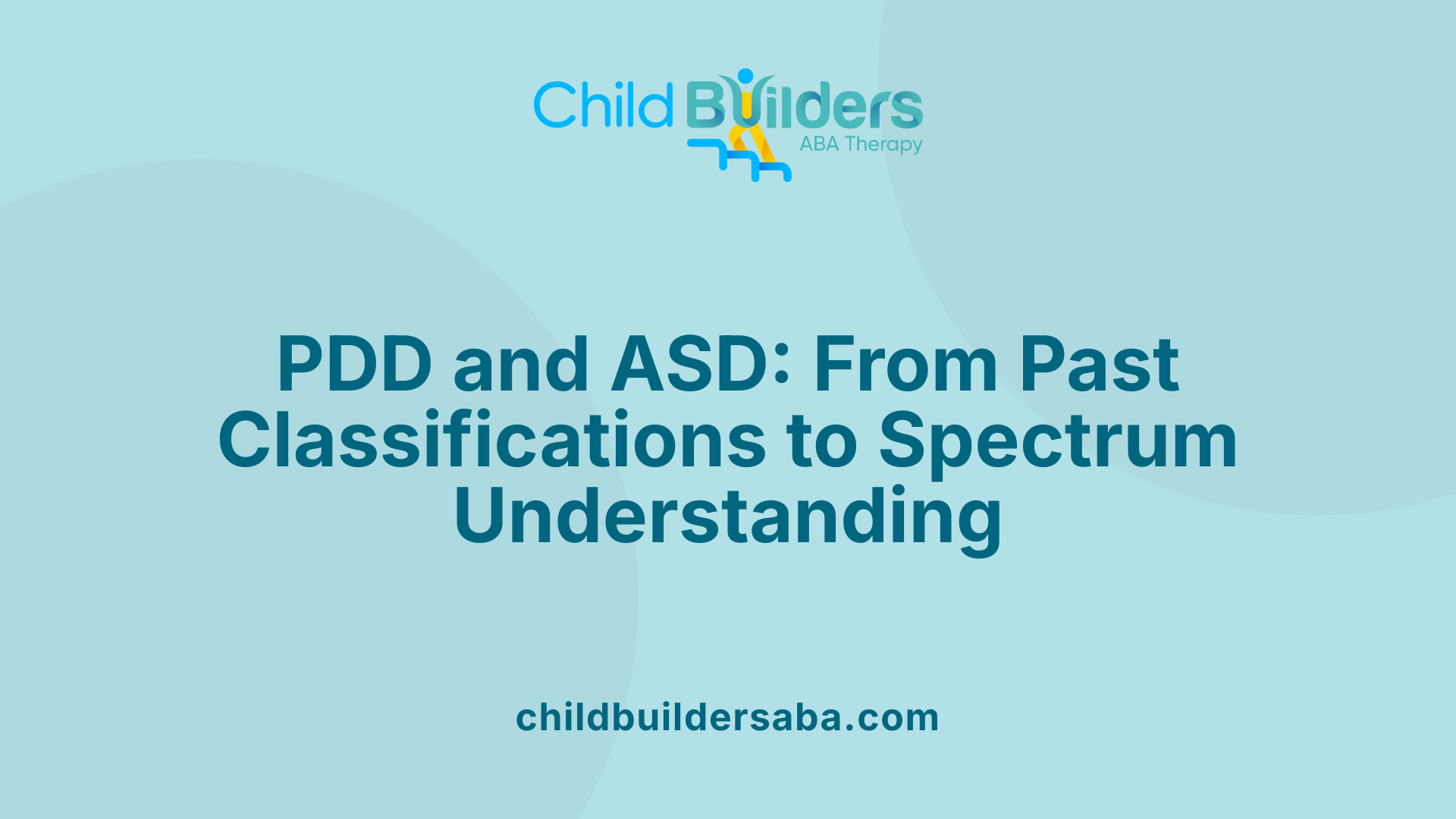What Is Pervasive Developmental Disorder

Exploring Pervasive Developmental Disorder (PDD) and Its Evolution
Pervasive Developmental Disorder (PDD) was once recognized as a distinct category of childhood developmental delays affecting socialization, communication, and behavior. Over time, advances in psychiatric research and clinical observations led to the reclassification of PDD into a broader, spectrum-based diagnosis known as Autism Spectrum Disorder (ASD). This shift aimed to provide a more accurate and inclusive understanding of these neurodevelopmental conditions, emphasizing their shared features and variability in severity. This article explores the characteristics, causes, diagnosis, and management of PDD, outlining how contemporary classifications have shaped diagnosis and intervention strategies.
Core Symptoms and Unique Features of PDD

What are the symptoms and characteristics of PDD?
Pervasive developmental disorder (PDD), especially PDD-NOS, is marked by significant difficulties in social interaction and communication, along with repetitive behaviors. Individuals often struggle with making eye contact, understanding non-verbal cues, and expressing their feelings clearly. Language delays or atypical speech patterns such as echolalia (repeating words or phrases) are common.
People with PDD may also demonstrate unusual play behaviors, like engaging with toys in repetitive or stereotyped ways, and show a preference for routines. When routines are disrupted, they might experience distress or become anxious.
Sensory processing differences are also typical, with some individuals showing hypersensitivity to sounds, textures, or lights, while others may seem hyposensitive, seeking out intense sensory input. These symptoms usually become noticeable around the ages of 3 to 4, though signs can appear earlier or later depending on the person.
The severity and specific features of PDD vary widely. Some individuals might have mild challenges and develop substantial independence, while others face more profound developmental delays. Early diagnosis followed by personalized therapies—such as speech, occupational, or behavioral interventions—can significantly support their growth, communication skills, and overall well-being.
The Origins and Causes of PDD

What causes PDD?
The exact origins of Persistent Depressive Disorder (PDD) are still being studied, but researchers agree that it results from a complex mix of multiple factors. Genetic, biological, and environmental influences all appear to play a role in its development.
Genetic factors are significant, as a family history of depression increases the likelihood of developing PDD. This suggests that inherited traits may predispose individuals to mood disorders.
Biological differences in the brain, such as alterations in structure and functioning, particularly in areas responsible for mood regulation, are also important. Abnormalities in neurotransmitters like serotonin, norepinephrine, and dopamine are linked to depressive states and are thought to contribute to the persistence of symptoms.
Environmental influences, including traumatic life experiences, chronic stress, and adverse personal circumstances, can act as triggers or exacerbate the disorder. Ongoing stressors, such as relationship problems, financial difficulties, or health issues, may set the stage for the onset or aggravation of PDD.
In summary, PDD does not have a single cause but instead arises from the interplay of genetic susceptibility, biological brain alterations, and environmental stressors. This multifaceted origin makes it a complex condition requiring comprehensive understanding and treatment.
Assessment and Diagnosis of PDD

What are the diagnostic criteria and methods for PDD?
Persistent Depressive Disorder (PDD), also known as dysthymia, is primarily diagnosed through careful clinical evaluation. Healthcare professionals gather detailed information on the individual’s developmental history, current mood, and observable behaviors. The main focus is on identifying a chronic depressive mood that lasts most of the day, nearly every day.
For children and adolescents, the mood must persist for at least one year, while in adults, it should be present for at least two years. During this period, symptoms such as changes in appetite, sleep disturbances, low energy levels, feelings of low self-esteem, difficulty concentrating, and hopelessness are assessed.
The criteria specify that these symptoms should be continuous most of the time and not be absent for more than two months at a stretch. To rule out other health-related causes or psychiatric disorders, clinicians often utilize various tools including psychological questionnaires, structured interviews, physical examinations, and laboratory tests. These help eliminate potential physical illnesses or alternative mental health conditions.
Since there are no specific lab tests for PDD, the diagnosis hinges on observing the persistence and duration of depressive symptoms. A thorough clinical discussion is essential to understand the chronic nature of mood disturbances, making clinical judgment the cornerstone of diagnosis.
Search Query for Further Information
To explore how diagnosis methods can vary across different age groups, a useful search phrase is "Diagnosis methods for PDD in different age groups." This can help uncover tailored approaches to diagnosing PDD in children, adolescents, and adults, ensuring age-appropriate assessment techniques.
Diagnosis: A Lifelong Process in Children and Adults
 Diagnosing pervasive developmental disorder (PDD), now encompassed under autism spectrum disorder (ASD), involves a careful evaluation of behavioral, developmental, and medical factors. Since there are no definitive laboratory tests for ASD, professionals rely heavily on developmental assessments, behavioral observations, and a detailed history of the individual
’s growth.
Diagnosing pervasive developmental disorder (PDD), now encompassed under autism spectrum disorder (ASD), involves a careful evaluation of behavioral, developmental, and medical factors. Since there are no definitive laboratory tests for ASD, professionals rely heavily on developmental assessments, behavioral observations, and a detailed history of the individual
’s growth.
In children, early screening plays an essential role. Pediatricians typically conduct developmental checks during routine checkups at around 18 to 24 months. These assessments focus on tracking milestones in language, social engagement, and behavior. If concerns are identified, more comprehensive evaluations are initiated.
Parents, teachers, and caregivers contribute vital insights about the child’s social interactions, communication skills, play behaviors, and habits. They may be asked to complete standardized questionnaires or rating scales that help highlight patterns characteristic of PDD/ASD.
For older children, teenagers, and adults, diagnosis involves similar methods. Healthcare providers or specialists in neurodevelopmental disorders evaluate ongoing behavioral patterns and developmental history. They observe social skills, communication abilities, and repetitive behaviors, and review cumulative developmental information.
The DSM-5 framework simplifies this process by diagnosing ASD based on persistent deficits in social communication and interaction, along with restricted or repetitive behaviors. Such criteria are applied universally across age groups.
Physical examinations and medical tests are also part of the diagnostic process. These help rule out other neurological or medical conditions that may cause similar symptoms or co-occur with autism. Sometimes, genetic testing or neurological scans are conducted if specific syndromes or conditions are suspected.
Overall, diagnosing PDD/ASD is a multifaceted process that requires collaboration among healthcare providers, families, educators, and specialists. Early and accurate diagnosis facilitates timely intervention, which can significantly improve developmental outcomes and quality of life for individuals on the spectrum.
Understanding PDD and the Broader Context of ASD

What is Pervasive Developmental Disorder (PDD)?
Pervasive Developmental Disorder (PDD) was a term used to describe a group of developmental delays affecting social and communication skills. These included conditions like autistic disorder, Asperger’s syndrome, childhood disintegrative disorder, and PDD-NOS. Often, children with PDD experience language delays, difficulty engaging socially, and repetitive behaviors such as hand-flapping or rocking. These challenges typically manifest in early childhood, sometimes as early as infancy, making early recognition crucial.
Historical classification and redefinition within ASD
Until 2013, PDD was considered a distinct category in diagnostic manuals like the DSM-IV. However, with new research and greater understanding, the American Psychiatric Association reclassified these disorders under a single umbrella term—Autism Spectrum Disorder (ASD)—in the DSM-5. This change aimed to better reflect the overlap in symptoms and the spectrum nature of these conditions. Consequently, diagnoses like PDD-NOS and Asperger’s syndrome are now included within ASD, which encompasses a wide range of severity levels.
Differences between PDD and ASD
In the past, PDD referred to several specific diagnoses, such as autistic disorder and PDD-NOS. These had more distinct criteria and severity distinctions. Since the DSM-5 update, ASD is now used as a broad term covering what was formerly diagnosed separately. ASD diagnosis depends on behavioral observations focusing on social interaction, communication, and repetitive behaviors. It does not involve lab tests but relies on developmental history and observations.
| Aspect | PDD (Before DSM-5) | ASD (After DSM-5) | Additional Details |
|---|---|---|---|
| Classification | Multiple separate diagnoses (e.g., autistic disorder, PDD-NOS) | Single spectrum diagnosis | Offers a unified diagnosis for all autism-related conditions |
| Focus | Based on specific criteria for each disorder | Emphasizes severity levels within a spectrum | Reflects the range of individual abilities |
| Rationale | To differentiate based on severity and specific features | To simplify and better represent the overlapping symptoms | Facilitates earlier diagnosis and tailored interventions |
Overall, understanding this evolution helps in recognizing the broad and varied presentation of neurodevelopmental challenges and highlights the importance of early, individualized support tailored to each person’s needs.
Treatment, Support, and Improving Lives
When it comes to managing pervasive developmental disorder (PDD) and autism spectrum disorder (ASD), a comprehensive, individualized approach is essential. Treatment options primarily include behavioral therapies, speech and language therapy, occupational therapy, and medication management.
Behavioral therapies, such as Applied Behavior Analysis (ABA), focus on improving specific skills and reducing problematic behaviors. Speech therapy helps children develop effective communication skills, including understanding language and expressing themselves clearly. Occupational therapy supports daily living skills and sensory integration, addressing sensitivities and helping with fine motor skills.
While there are no medications that cure PDD/ASD, certain drugs can alleviate associated symptoms. For instance, selective serotonin reuptake inhibitors (SSRIs) are often used to manage anxiety, depression, or obsessive behaviors. Medications like antipsychotics may be prescribed to reduce severe behavioral issues or irritability.
Treatment and management options for PDD typically combine these therapies to suit individual needs. Early intervention plays a vital role—starting therapy as soon as behavioral signs are observed can significantly improve outcomes.
In addition to therapies, lifestyle modifications support overall well-being. Regular physical activity, a balanced diet, consistent sleep routines, and avoiding substances like alcohol and recreational drugs help enhance the effectiveness of treatment strategies.
Ultimately, long-term management often requires an integrated approach that considers a person’s unique strengths and challenges. Continuous monitoring and adjustments by healthcare professionals ensure that interventions remain effective and supportive, helping individuals reach their full potential and improve their quality of life.
Moving Forward in Understanding and Supporting People with PDD
In summary, Pervasive Developmental Disorder, historically a distinct diagnosis, now falls under the umbrella of Autism Spectrum Disorder, reflecting the spectrum and variability in presentation. Symptoms such as social communication difficulties, repetitive behaviors, sensory sensitivities, and developmental delays form the core features, with causes involving genetic and environmental factors. Diagnosis involves behavioral assessments and developmental history, emphasizing early identification and intervention. While there is no cure, a range of therapies and support systems can significantly improve quality of life. Ongoing research continues to expand understanding, with a focus on early detection, personalized treatments, and societal inclusion. Recognizing the diversity within ASD and prioritizing tailored support are key to helping individuals reach their full potential.
References
- Pervasive Developmental Disorder (PDD) - Cleveland Clinic
- Pervasive Developmental Disorder - Not Otherwise Specified (PDD ...
- Pervasive developmental disorder - Wikipedia
- Pervasive Developmental Disorders (PDD) - WebMD
- Autism Spectrum Disorder - National Institute of Mental Health (NIMH)
- Pervasive Developmental Disorder - Not Otherwise Specified (PDD
- A to Z: Pervasive Developmental Disorder (PDD) - Kids Health
- What is Pervasive Developmental Disorder? | 5 PDDs Explained
- Table 5, DSM-IV Pervasive Developmental Disorder Not Otherwise ...



.jpg)

































































































